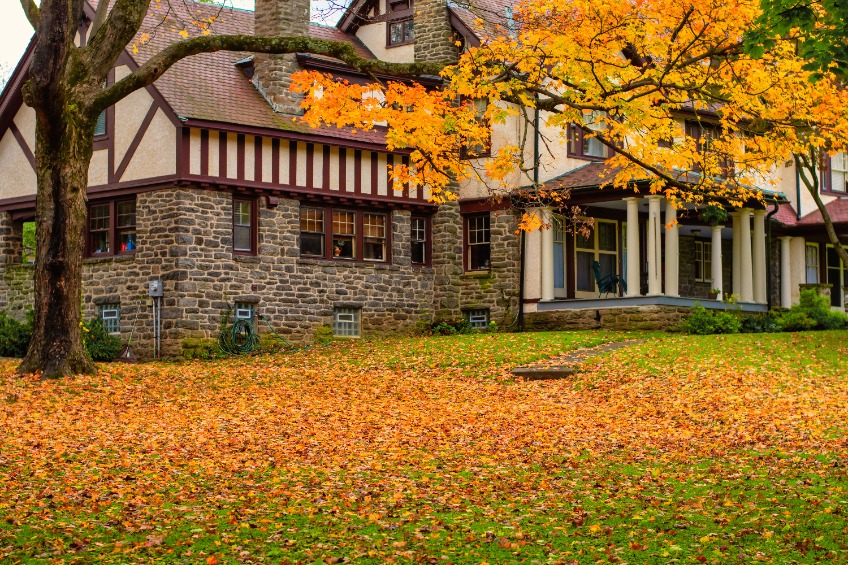
Trees must change their leaf color and drop the leaves before winter as part of a survival process. Since trees are literally rooted to their spot, they must adapt to endure the freezing months. In Utah, we’re lucky to see the gorgeous displays of color from our many trees. The National Park Services states: “Broadleaf trees are responsible for the colorful annual display that defines autumn. For most of the year, a bright green chemical called chlorophyll supports photosynthesis in leaves. When the days grow shorter, chlorophyll dies off and other chemicals become the main source of color.” Additionally, these trees grow a layer of scar tissue on the stem of every single leaf, which weakens the connection of the leaf to the tree. Between wind gusts and gravity, the leaf will finally get pulled away from the tree.
Conifer trees are the ones that stay green all winter. They have needles rather than leaves therefore they lose less water. Because most of the water the tree will receive through the winter comes in the form of snow, they have to wait until it melts before it can have a drink. Conifer trees reuse needles for many years before growing new ones, so they don’t have the luxury of throwing them away each winter.
Both trees must do what they can to conserve water through the entire winter without freezing and dying. NPS tell us there is trick to this: “a tree can survive having ice crystals between its cells, but dies when the cells freeze. They stop this from happening by taking advantage of a really cool chemical reaction in water … in the fall, trees gradually dehydrate themselves to increase the concentration of sugar in their cells. Extra water becomes insulation for the sugar-heavy cells, making them even more resilient to freezing.” Trees have learned how to adapt to endure freezing temperatures, but they aren’t immune to winter dangers. Sometimes heavy snow and thick ice can snap branches, and if enough breakage happens, the tree can die. This is why timely and accurate pruning is important for all trees, but even more so for trees in areas of heavy snowpacks.
If you noticed your tree lost most of its leaves too soon, there can be other reasons than simply the natural life cycle. Some common reasons for trees to lose their leaves early include a too-crowded canopy, it’s diseased or has a pest infestation, or it’s stressed from lack of water or too much water. If it’s been an especially hot or dry summer, trees will drop leaves early to conserve water. If you suspect a disease, fungus, or pest, there several different ways to tackle these problems.
Protect your trees this winter by pruning carefully, wrapping younger or weak trees, and inspecting for pests or damage. For help with your trees, Timber Ridge Tree Service is at the ready.